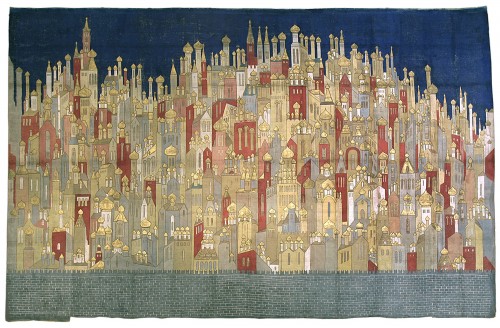Cat. No. 62 / File Name: 3413-058.jpg
Natalia Goncharova
Back cloth for the final Coronation scene from The Firebird, 1926
painted canvas
1024 x 1571 cm (403 1/8 x 618 1/2 in.)
V&A, London
© 2013 Artists Rights Society (ARS) New York/ADAGP, Paris. Photo © Victoria and Albert
Museum, London






